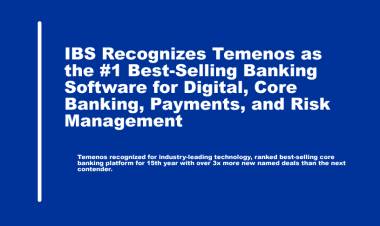- Home
- Overseeing risks
Recommended Posts
Random Posts
Report: Cloud-based core banking vendors look to smash...
Report: Cloud-based core banking vendors look to smash legacy oligopoly New firms...
US bank CTO: Regulators providing "zero" support for innovation
US bank CTO: Regulators providing "zero" support for innovation By Rebekah Tunstead...
Tags
- payment processing capabilities
- Payment automation
- Agile product creation
- electronic payments
- Chatbots
- SWOT
- The KPIs of digital transformation in 2020.
- Core banking selection
- Could payment automation completely replace credit cards?
- core banking infrastructure to the cloud
- Real-Time Payments Traction
- What is the formula to avoid it?
- ACI Worldwide
- Adaptable Core Banking Systems
- core
BASIC CONCEPTS:
●Virtual Banking: With this concept, banks no longer have physical branches. Cash transactions are carried out exclusively using ATMs. Clients meet with their bankers or investment advisors using video over the Internet. Bankers share relevant financial information using their computer screens, and the forms are digitally "signed."
● Power of Attorney: This concept is transformed into a branch of the "one-stop shop", offering a wide range of services, including tax preparation, legal advice, or insurance policies. Specialty branches could also include coffees to meet friends and colleagues, events for local clients, and video conferencing suites.
● Self-Service Retail Banking: This concept is a thinned-down branch. It includes fewer employees, several ATMs, and there are no traditional ATMs. Aerodynamic branches are similar to the self-service kiosks currently used by airlines, where employees use tablets to help customers with their needs. For more complex services, remote specialists are available through two-way video conferencing kiosks.
● Pod or Kiosk banking: This concept is a small cabin that includes a video screen and an ATM, which allows customers to perform basic and complex transactions, such as ordering checks, opening accounts, and interacting with employees of the Bank. Because they are fully automated, bank pods can easily be located in several places, such as shopping centers and car dealers.
● Branch Agent: Currently used in emerging countries, this concept is a franchise model, where an organization such as a post office, convenience stores, or retailer offers financial services on behalf of a bank.
● Mobile Banking: This concept focuses on offering as many services as possible on mobile devices such as smartphones and tablets. Mobile banking also takes full advantage of personalization and location-based services through the use of customer information.
● Social Media: This concept uses social media sites such as Facebook and Twitter to offer financial services such as making deposits, money transfers, loan applications, and account opening.
● Customer detection: This concept uses customer information, such as credit card transactions and social media activity (for example, "like" on Facebook) to deliver personalized offers and discounts from third parties.
● Fingerprint Management: This concept takes advantage of the need for customers to manage their "fingerprints" that are left behind from transactions and interactions in social networks, mobile devices, and online payments. Banks manage their clients' fingerprints to alert them to security issues and securely share information to receive personalized offers.
● Public banking: These are institutions and agencies of the Central Government, the Regional Government and other decentralized institutions.
They are those banks in which the State has control of the shareholders, as well as constitutionally autonomous bodies. The capital is contributed by the state.
● Mixed banks: Commercial corporations that are constituted with state contributions and private capital are mixed economy.
Mixed economy societies are governed by the rules of private law and those of ordinary jurisdiction, unless otherwise provided by law.
● Private Banking: Those entities that work for their own autonomy; In addition to adopting the structure of a private financial entity, capital is contributed by private shareholders of national or foreign capital and of foreign branches or entities. ● Commercial Bank: They must be constituted in the form of a corporation or cooperative society. Its natural action is mainly planned for the short term (although the medium and long term is also admitted). They integrate the monetary system, being able to "create" bank money. It is the link between the monetary authority and the public. Commercial banks may perform all active, passive and service operations that are not prohibited by law.
● Investment Bank: They must be constituted in the form of a public limited company. Its mission is to make it easier for companies to obtain fixed capital and medium and long-term loans and to mediate in the capital market. Its action helps the consolidation and expansion of companies and their capitalization.
It receives term deposits, issues bonds, grants medium and long-term loans, grants guarantees, makes investments in transferable securities, makes investments of a transitory nature, acts as a trust, obtains loans abroad, performs operations in foreign currency and fulfills mandates and commissions.
● Cloud computing: The basic feature of cloud computing is that computer resources and services, such as infrastructure, platform and applications, are offered and consumed as services over the Internet without users having to have any knowledge of what happens behind . This is because users have no idea about the infrastructure that operates to offer the services is that it is called Computing in the Clouds.
















